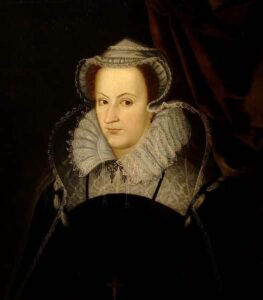
Mary Queen of Scots was the daughter of James V of Scotland and his second wife, Mary of Guise, and the granddaughter of Margaret Tudor (Henry VIII’s sister) and James IV of Scotland. On the 14th December, when she was just six days old, Mary became Queen of Scotland after her father died of a fever. She was crowned queen on 9th September 1543 at Stirling Castle. As Mary was a baby, James Hamilton, 2nd Earl of Arran, acted as regent until 1554 when he surrendered the regency to Mary’s mother, Mary of Guise, who acted as regent until her death in 1560.
At the age of five, Mary was sent to France after the marriage between her and François, the French Dauphin, had been agreed in a treaty in 1548. As the future queen consort of France, she received an excellent education and showed herself to be an excellent linguist. She married Francis (François) on the 24th April 1558 at Notre Dame Cathedral in Paris, she was 15 and her husband was 14. Henry II of France died in July 1559 and Mary’s husband became Francis II of France. The couple already believed that they were King and Queen of England, Henry II having proclaimed them so after Mary I’s death in 1558. Although Elizabeth I was Queen of England, having been named as next in the succession after Mary I in her father’s will, many Catholic did not accept Elizabeth as Queen, because they believed her to be illegitimate, and believed that Mary Stuart was the true queen.
Francis II died on 5th December 1560 and Mary returned in August 1561 to her homeland of Scotland, a country dvivided by religious conflict. Although she was a staunch Catholic, she tolerated Protestants and had many Protestants on her Privy Council.
On the 29th July 1565, Mary married her second husband, Henry Stuart, Lord Darnley, at Holyrood Palace. You can find out more about their marriage at “Mary Queen of Scots Marries Lord Darnley”. The marriage broke down when Darnley was involved in the murder of Mary’s secretary, David Rizzio, who was actually murdered in front of a pregnant Mary. The couple’s son, James, the future James VI (James I), was born on 19th June 1566, and was just eight months old when his father, Darnley, was killed in an explosion at Kirk o’ Field in February 1567. Mary went on to marry James Hepburn, 4th Earl of Bothwell, a man implicated in Darnley’s murder, after allegedly being abducted and raped by him in April 1567. The couple married at Holyrood on the 15th May 1567. The Scottish nobility did not approve of the match and raised an army against Bothwell and Mary. Mary was imprisoned in Loch Leven Castle where, in July 1567, she miscarried twins. On the 24th July 1567 she was forced to abdicate and her son became James VI of Scotland with Mary’s illegitimate half brother, James Stewart, Earl of Moray, acting as regent.
Mary managed to escape from Loch Leven on the 2nd May 1568 and she fled to England where she was placed in protective custody in Carlisle Castle under the orders of Elizabeth I. She was to spend the rest of her life as a prisoner, being moved from Carlisle to Bolton Castle in July 1568, from Bolton to Tutbury Castle in January 1569, from Tutbury to Wingfield Manor, Chatsworth and Sheffield Castle and then back to Tutbury, from Tutbury to Chartley in December 1585, and finally to Fotheringhay Castle in 1586.
On her arrival in England in 1568, Mary had expected Elizabeth to support her in her endeavour to win back the throne of Scotland but Elizabeth was unwilling to help a woman who was implicated in the murder of her second husband, Lord Darnley, and who refused to ratify the Treaty of Edinburgh. Mary was a threat to Elizabeth, as was shown by the Ridolfi Plot of 1570, a plot to assassinate Elizabeth and replace her with Mary. Mary denied any involvement in the plot but was implicated in the Babington Plot of 1586 after Sir Francis Walsingham intercepted letters in which Mary gave her support for an attempt on Elizabeth I’s life. Mary was tried for treason in October 1586 and found guilty. Parliament and Elizabeth’s Privy council put pressure on Elizabeth to execute Mary but Elizabeth was unwilling to sign the death warrant of a fellow sovereign, who she believed to be appointed by God, and also a woman with Tudor blood. Elizabeth finally signed Mary’s death warrant on the 1st February 1587 and it was delivered, without the Queen’s knowledge, to Fotheringhay where the sentence was carried out on the 8th February 1587.
You can read all about the death warrant “debacle” and Mary’s execution in my article “Mary Queen of Scots – Part Two” and here are some other articles on Mary Queen of Scots:-
- Mary Queen of Scots Part One
- The Bosom Serpent and Gloriana
- Mary Queen of Scots Marries Lord Darnley
- The Murder of Lord Darnley
- The Trial of Mary Queen of Scots
- Mary Queen of Scots Lands in Scotland
My book recommendation for Mary Queen of Scots is John Guy’s My Heart is My Own: The Life of Mary Queen of Scots or, in the US, Queen of Scots: The True Life of Mary Stuart
Want to know more about Lord Darnley? Check out Gareth Russell’s article on him at December 7th 1545: Birth of Lord Henry Darnley
P.S. My article The Trial of Mary Queen of Scots caused some heated debate – click here to check it out!
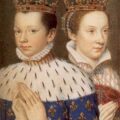
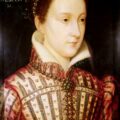
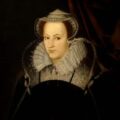
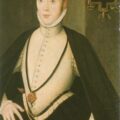
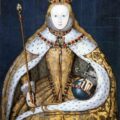
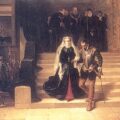

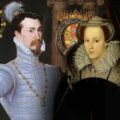

I don’t care how well educated Mary Stuart was, she was definitely unprepared for the realities of being a Queen Regnant. Entering into two marriages that were highly unpopular is not the act of an intelligent person. Husband number two was a murderer, who ended up being murdered, apparently by the man who became her third husband, who also raped her! Then she flees for her life after abdicating her throne to her infant son, and spends the rest of her life plotting against the cousin who sheltered her from her enemies.
Her story is so strange that no one would believe it if it were told in a novel–The really strange part for me is that she married the man who supposedly raped her–I think that was all a ruse so they could get married. It is said she was pretty and easily persuaded men to her cause. She certainly was a thorn in Elizabeth’s side for many years. I wonder what might have happend if these two very different women had met??
Great article as always, Claire! Man..that debate on your Trial of Mary Queen of Scots article is CRAZY!!! That guy didn’t know what he was talking about and his comments were utterly confusing…and looney! It’s great to see so many people come to your defense! I was starting to get ticked off at him and wanted to comment until I remembered it was from back in October. Anyways, keep up the great work like you always do! Those who knock us down or around, make us stronger! 🙂
I have to agree with Jennifer. After reading the debate, I swear steam was coming off of my computer! And I think Jennifer is right in pointing out what a good job you and the other contributors did in refuting his ideas. It’s hard to deal with some of the more argumentative people, but you and the others did a great job.
I agree with Lisa and Jennifer. I couldn’t make out what the guy was saying; he kept typing the wrong facts (including saying that Mary Queen of Scots was Mary I’s daughter, but he did own up to that mistake). And why was he typing in all caps? Claire, you and the others who commented did a great job in proving him wrong!
Thanks, Eliza x
He he! I do love debate though, it does brighten up one’s day!
Interesting person, who thought she should rule England too.
Bothwell went to Denmark and you can gear his “gost” ride nights from the Castle Dragsholm. Good texst
Bente
Was it rape or a plot agreed upon by Mary to somehow justify her marriage to Bothwell, likely her lover, who was considered to have been involved in Darnley’s murder and much hated by the Scots.
In the following link there is a painting of Anne Boleyn (the first painting) https://www.theanneboleynfiles.com/advent2013/page8.php (your link). Can you please give me more information about it because I happen to have a copy of it and I would like to learn more about it? Very nice work!